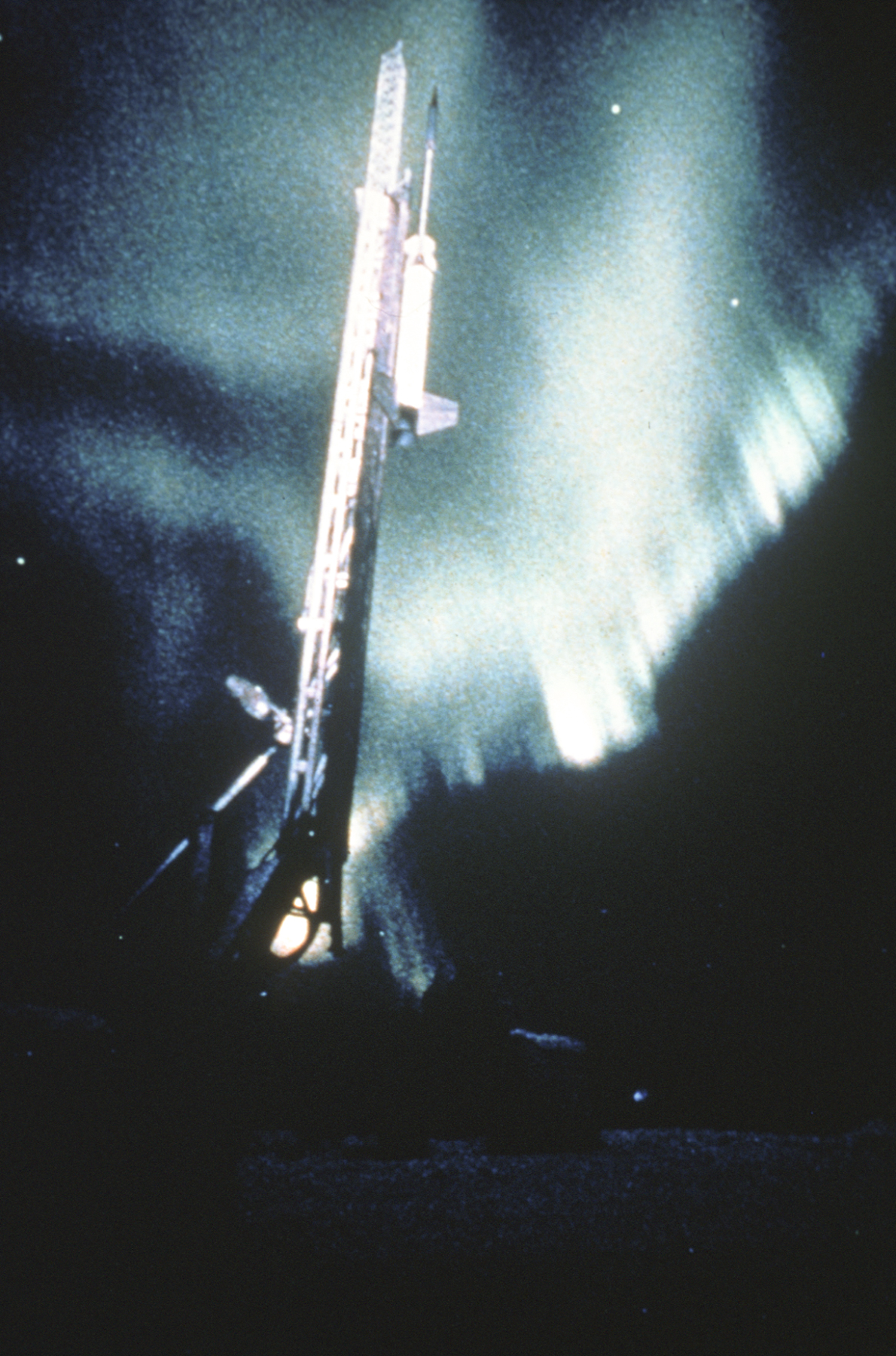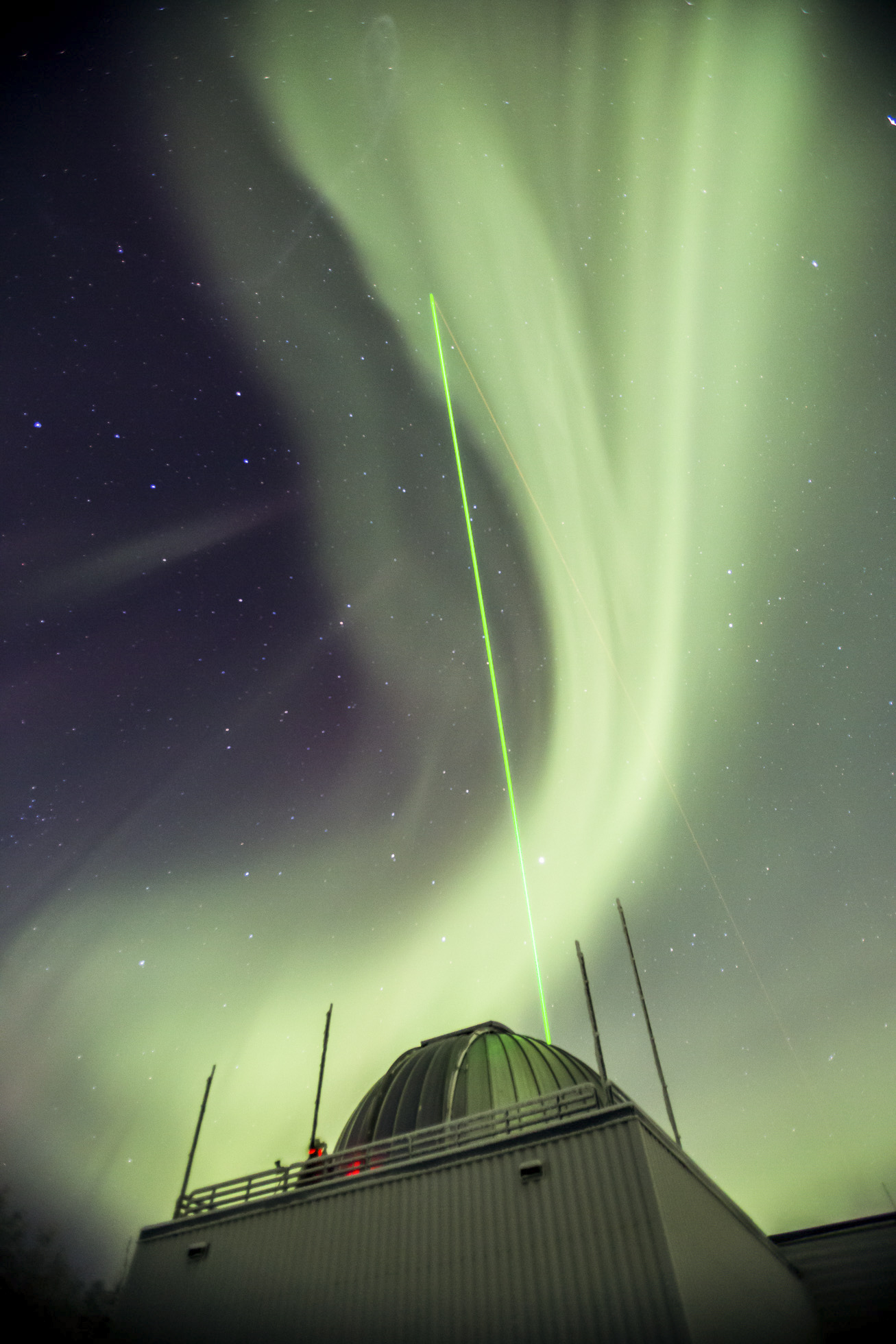
In March of 1969, while the rest of the world was focused on the Apollo missions to put the first humans on the moon, a group of physicists at the University of Alaska Fairbanks (UAF), led by Neil Davis of the Geophysical Institute, were putting the final touches on a space rocket launch right here in our own backyard. Built on a 5,000-acre parcel of land about 30 miles north of town, the site became known as Poker Flat Research Range.
March is the 50th anniversary of the first rocket launched from Poker Flat into the aurora borealis to gather data. The public is invited to join the celebration of a half-century of research at an open house event from 8:00 pm to midnight on Saturday, March 9.
This free and family-friendly special event includes a tour of the upper range facilities, and a rare opportunity to view the Light Detection and Ranging (LIDAR) facility, Telemetry and the Davis Science Operations Center which are not part of their summer walking tour.
A rocket range in Fairbanks had two important advantages. First, it would be located near university space physics scientists studying the aurora. Second, it was being built at a site just below the “Auroral Oval”, the place on the planet where most auroras occur.

UAF research on the northern lights began in the 1920s, and after the Geophysical Institute was established in 1946, local scientists developed the idea of using sounding rockets as a way to study the aurora. By the end of the 1960s, the Department of Defense contracted for a minimal rocket range to support the launch of six barium-release rockets. When a seventh NASA-sponsored auroral zone rocket was launched, Poker Flat marked its first civilian agency experiment from the new range, proving its viability as a permanent facility for years to come. 
Today, Poker Flat Research Range is the largest land-based rocket research range in the world and the only high-latitude rocket range in the United States. Most sounding rocket launches occur between January and March. In addition to launching sounding rockets to investigate the aurora, Poker Flat is home to many scientific instruments designed to study the Arctic atmosphere and ionosphere. In fact, our Explore Fairbanks Aurora Tracker uses real-time data from the UAF Geophysical Institute, correlated with local weather to predict northern lights viewing opportunities for six locations in the Fairbanks region.
If you are driving to the 50th anniversary event, gates will open at 7:30 pm. Two complimentary round-trip shuttles will depart from the Geophysical Institute on campus. Space is limited, so shuttle reservations are recommended.
If you go:
- What: Poker Flat Rocket Range 50th anniversary open house
- When: 8:00 pm to midnight, Saturday, March 9, 2019
- Where: 30 Mile Steese Hwy, Fairbanks
- Cost: Free!
- Getting there: You can drive to the event or take the free shuttle from UAF campus
- More information: Shuttle reservations, please visit this website








